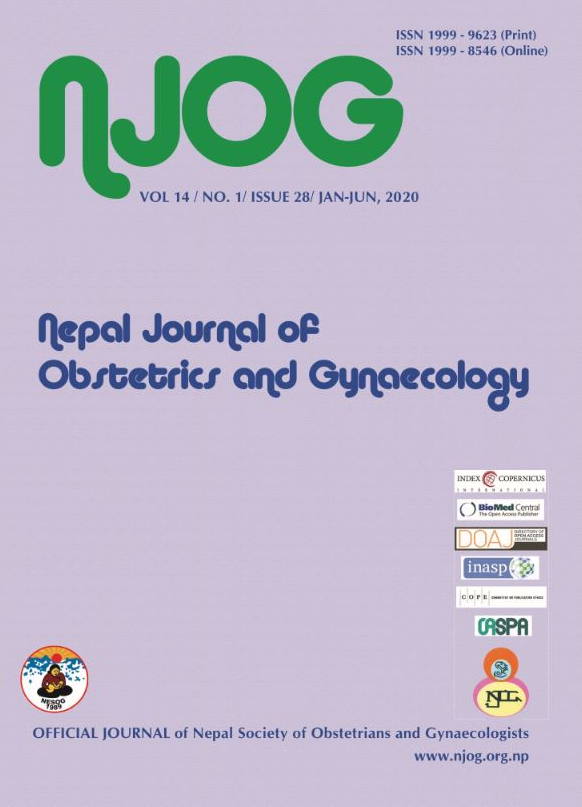Rare Malignancies of the Female Genital Tract
Abstract
Aims: To analyze rare female genital tract malignancies.
Method: This is retrospective descriptive study as a census of all rare female genital tract malignancies in two years from 2017 to 2019 at Paropakar Maternity and Women’s Hospital in Kathmandu. Data were retrieved from medical record and entered into Microsoft Excel and SPSS 16 window for analysis.
Results: There were 156 cases of female genital tract malignancies including 128 common types and 28 rare types. Majority fell under 41- 50 years (n=44; 28.2%) followed by over 60 (n=41; 26.2%) and 51-60 years (n=34; 21.8%). Among ovarian tumors, the rare varieties were adult granulosa cell tumor (n=4), immature teratoma (n=3) and single case each of yolk sac tumor, dysgerminoma, malignant mixed germ cell tumor, carcinoid tumor, juvenile granulosa cell and sertoli cell tumor. There were one case each of carcinosarcoma, serous carcinoma and endometrial stromal carcinoma; two cases each of leiomyosarcoma and choriocarcinoma while there was a single case of placental site trophoblastic tumor. The rare cervical malignancies were small cell (n=2), and clear cell carcinoma (n=1). There were single cases each of basal cell carcinoma of vulva, verrucus carcinoma, fibromyxoid sarcoma of Bartholin’s gland and malignant melanoma of vagina.
Conclusion: Rare female genital tract cancers were found mostly from the ovary followed by uterus; 18% of total cancers were rare types.
Key words: female, genital tract, rare malignancy
Downloads
Downloads
Published
How to Cite
Issue
Section
License
Copyright on any research article in the Nepal Journal of Obstetrics and Gynaecology is retained by the author(s).
The authors grant the Nepal Journal of Obstetrics and Gynaecology a license to publish the article and identify itself as the original publisher.
Articles in the Nepal Journal of Obstetrics and Gynaecology are Open Access articles published under the Creative Commons CC BY-NC License (https://creativecommons.org/licenses/by-nc/4.0/)
This license permits use, distribution and reproduction in any medium, provided the original work is properly cited, and it is not used for commercial purposes.



